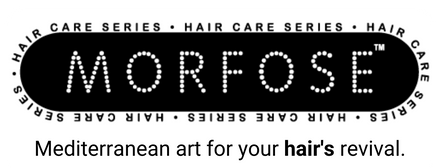Unlocking the Secrets to Healthy Hair Growth
Posted by MORFOSE COSMETICS

Exploring the Factors Behind Stalled Hair Growth
We all dream of having long, luxurious locks, but many of us find ourselves grappling with damaged, brittle, or stubbornly short hair. If you've ever wondered why your hair seems to have hit a growth plateau, you're not alone. There's a multitude of reasons why your hair may not be flourishing, and in this comprehensive guide, we'll uncover these potential culprits and offer solutions to rekindle the spark of healthy hair growth.
1. The Hair Growth Cycle
Understanding the hair growth cycle is fundamental in deciphering the mysteries behind sluggish hair growth. Hair moves through three primary phases:
Anagen Phase: This is the active growth phase, typically spanning 2 to 8 years. Around 90% of hair follicles are in this phase at any given time, leading to robust growth.
Catagen Phase: The catagen phase is a transitional period where hair ceases active growth but doesn't fall out. It lasts about 4 to 6 weeks.
Telogen Phase: The "resting phase" when hair naturally sheds, lasting about 2 to 3 months. During this phase, you may notice more hair coming out during activities like showering or sleeping.
Since not all hair follicles are in the same phase simultaneously, hair growth can appear inconsistent or slow at times.
2. Genetics
Genetics and family history are influential factors in hair loss for both men and women. If your parents experienced thinning hair, particularly on either side of the family, you might be genetically predisposed to it.
3. Age
Age plays a role in hair growth for both genders. Postmenopausal women might experience hair loss due to changing hormone levels, while men often encounter gradual hair thinning as they age. By the age of 50, approximately 85% of men will have significantly thinner hair.

4. Nutritional Deficiencies
A deficiency in essential vitamins and minerals, including iron, protein, biotin, and zinc, can restrict hair growth and lead to thinning. Incorporating nutrient-rich foods into your diet can support healthy hair growth.
5. Thyroid Problems
An underactive thyroid can disrupt the production of thyroid hormones, resulting in hair loss. If you're experiencing other symptoms such as fatigue or difficulty losing weight, consult a healthcare professional.
6. Stress
Stress can trigger a condition called telogen effluvium, causing hair to enter the telogen phase prematurely and hampering growth. Engaging in stress-relief activities can help alleviate stress and support hair growth.
7. Hair Breakage and Split Ends
Hair breakage and split ends can occur due to over-processing or excessive heat styling. These factors can weaken hair over time, causing it to break off and appear shorter. Regular haircuts can help prevent split ends and encourage faster hair growth.
8. Hairstyles and Styling Products
Complex hairstyles involving frequent combing and pulling can damage hair. Excessive use of chemical products and styling tools can hinder growth and lead to scalp conditions resulting in permanent hair loss.
9. Medical Conditions
Certain medical conditions like alopecia areata can impede hair growth. Consult a doctor for proper diagnosis and treatment if you suspect a medical condition is affecting your hair.
10. Poor Hair Care Routine
Improper hair care routines can significantly affect hair growth. Over-washing, using harsh shampoos and conditioners, aggressive towel-drying, and excessive heat styling are all damaging habits.
By addressing these factors and adopting a healthy hair care routine, you can rejuvenate hair growth and work towards achieving the long, healthy locks you desire. Be patient, stay diligent, and watch as your hair journey takes you toward healthier, stronger hair.


